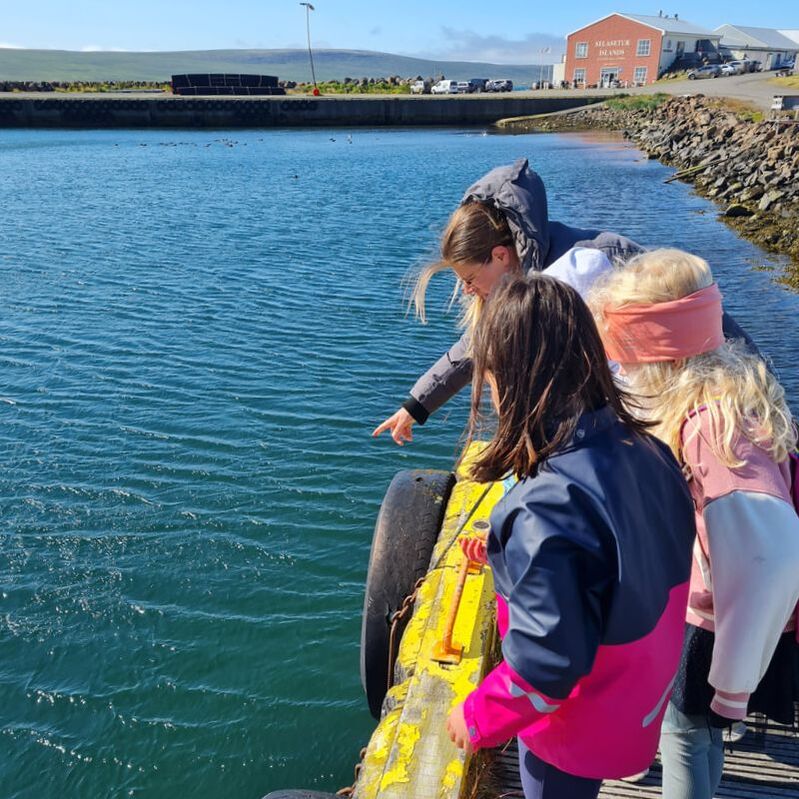|
We went out again on the 18th of July to see what kind of wildlife we could find in the Hvammstangi harbor. In Spring, the only crabs we found were spider crabs (Hyas araneus), but now in July the only species that seems to be around is the invasive Atlantic rock crab (Cancer irroratus). We found 5 yesterday, all of which were mature males. This pattern is consistent with previous years, and is probably due to these animals' life cycle: great spider crab mating occurs from February to April, while Atlantic rock crabs mate from August to September. It would be fascinating to study the transition in abundance of these two species in the shallow waters of Iceland, which occurs sometime between May and June. It is also interesting to note that all the individuals we found were males, which shows that females prefer deeper waters. All results from this year's harbor monitoring can be found on the free YAN app (see here for more information). References: Haefner, P.A. 1976. Distribution, reproduction and moulting of the rock crab, Cancer irroratus Say, 1917, in the mid-Atlantic Bight. J. Nat. Hist. 10: 377-397. https://doi.org/10.1080/00222937600770291 Harzsch, S., Miller, J., Benton, J., Dawirs, R. R., & Beltz, B. (1998). Neurogenesis in the thoracic neuromeres of two crustaceans with different types of metamorphic development. Journal of Experimental Biology, 201(17), 2465–2479. https://doi.org/10.1242/JEB.201.17.2465  Mature male Atlantic rock crabs. Males grow up to 15cm while females only grow up to 10cm, and males have a triangle-shaped abdomen while it is more rounded in females.
0 Comments
|
Archives
March 2024
Categories
All
|





 RSS Feed
RSS Feed












